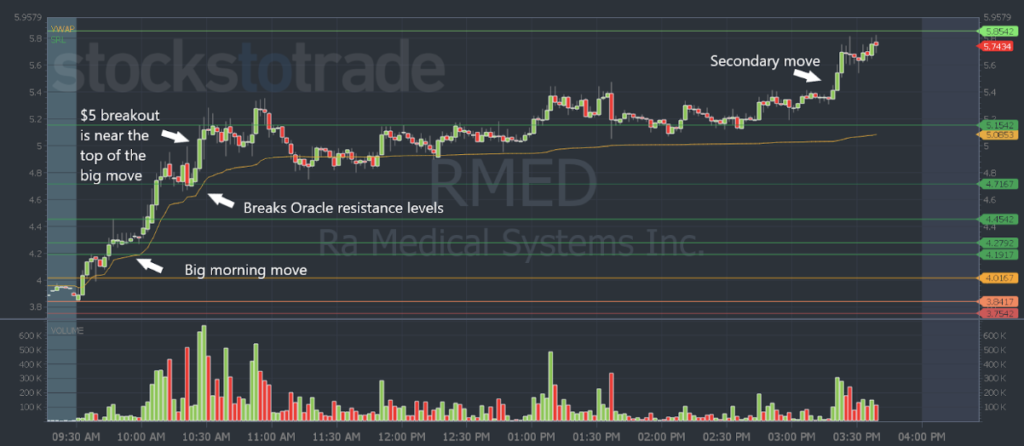Are you buying the top of breakouts?
Does it seem like every time you buy a stock it goes down?
Stocks can have wild moves throughout the day. So how do you know when to buy a breakout and when to give the stock more time to set up?
That’s what I’m digging into today…
Waiting for the right entry is tough, but it can help you avoid buying the top of a breakout and getting stuck with an unnecessary loss.
Taming the FOMO that makes you want to jump right in takes practice. But what I’m about to show you could help you realize when it’s best to get in, or when to walk away…
Maybe you even got caught in this stock yesterday.
So if you’re sick of buying the tops of moves — read on…
One Way to Avoid Buying Tops
Buying breakouts isn’t as simple as buying a stock when it breaks a key level, then just watching it go up…
There are going to be up-and-down moves while the stock picks a trend. And yes, sometimes breakouts fail. You have to cut your loss at your risk level and accept it.
But even when a stock continues higher, they rarely go straight up without some up-and-down action.
So how can you determine whether you should buy the breakout or wait for a secondary move?
Look at what the stock did leading up to the breakout…
If it did what Ra Medical Systems, Inc. (NYSE: RMED) did yesterday, you might want to sit out that trade. At least in the short term…
Look At What RMED Did Yesterday…
Yesterday, RMED was on watch for a potential day three surge pattern (remember, we don’t care which day it happens on, it’s still the same pattern). The key level to watch was a break over $5.
But right after the market opened, RMED shot up from roughly $4 to $5.25.
So do you buy the breakout at $5 when the stock just made a $1 per share move?
No.
This is why so many traders lose and get frustrated buying the tops of breakouts.
When a stock has already made a big move, you missed it…
You need to be there first — like some traders were in the SteadyTrade Team.
They didn’t wait for the breakout level. They saw the price action and followed Oracle support and resistance lines to make a trade…
But if you’re new and don’t have experience reading price action, that might seem a bit aggressive.
So what else can you do?
When a stock shoots straight up into a breakout level like RMED did yesterday, you want to wait before you take an entry.
This is good practice for controlling FOMO…
Wait for the stock to pull back and consolidate. We want the stock to lure more shorts in who are risking the breakout level. Or in the case of RMED, they’re probably risking the new daily high above the breakout level.
Then you watch for a secondary breakout.
RMED had a better secondary breakout level yesterday afternoon. And it followed Oracle’s levels…
If you got caught in the failed morning breakout, remember what my mentor Tim Sykes teaches — cut losses quickly! (Stay tuned for info on a new strategy Sykes is watching for right now!)
You have to determine what cutting losses looks like for you…
Either when a chart support level breaks, when you hit your max risk, or maybe you wait for the stock to break below VWAP or the Oracle level.
You’re in charge of your trade plan and execution.
If you want guidance on key levels — use Oracle.
But if you want the lessons, insight, and trade ideas and plans from a mentor that has 15 years of experience — join the SteadyTrade Team.
Have a great day everyone. See you back here tomorrow.
Tim Bohen
Lead Trainer, StocksToTrade

